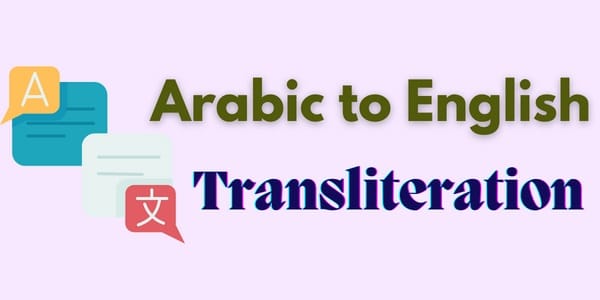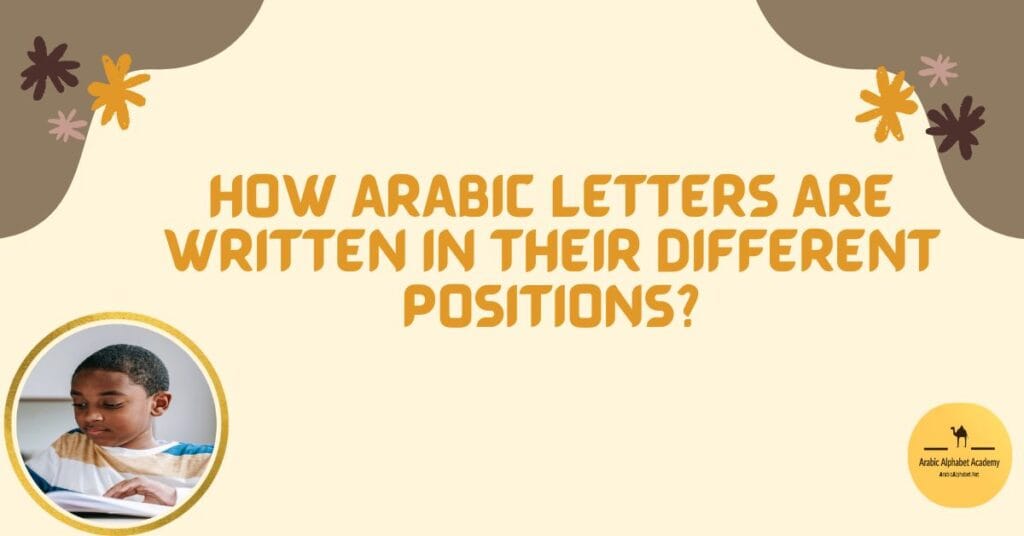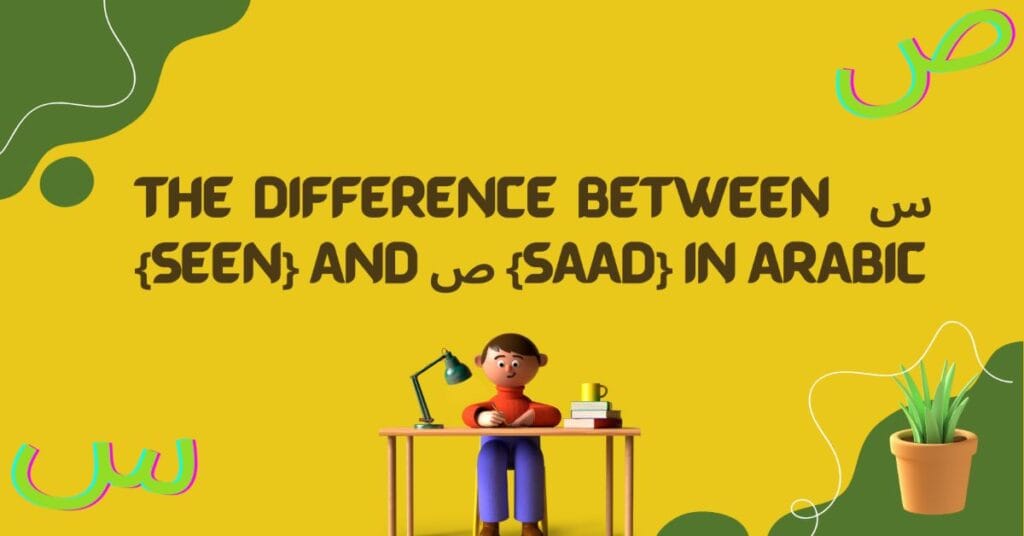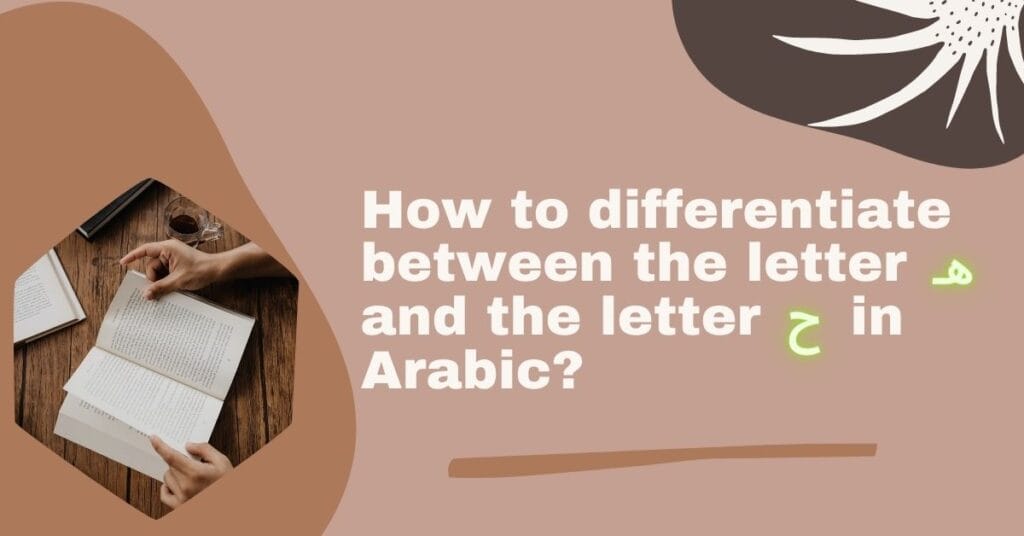What is Arabic Transliteration?
The Transliteration (also known as Romanization) of Arabic is the systematic rendering of written and spoken Arabic in the Latin script. It is used for various purposes, among them transcription of names and titles, cataloging Arabic language works, language education when used instead of or alongside the Arabic script, and representation of the language in scientific publications by linguists. It worth noting that, in the late 1990s, some Arab internet users started using a combination of Latin script and Arabic numerals to replace the special Arabic letters that do not correspond to any Latin letters) and, in this way, invented Arabizi (Franco Arabic – Arabic chat alphabet). For example: [7ah ( ح ) = H or 7] – [Haa ( ه ) = ha or 2] – [khah (خ) = Kh or 5] – [3een (ع) = 3].
Methods of Arabic transliteration

Most systems for romanizing Arabic are actually transcription systems, which represent the sound of the language, since short vowels and geminate consonants, for example, does not usually appear in Arabic writing. As an example, [munāẓaratu l-ḥurūfi l-ʻarabīyah] is a transcription of مناظرة الحروف العربية, indicating the pronunciation; an example transliteration would be mnaẓrḧ alḥrwf alʻrbyḧ.
Different systems and strategies have been developed to address the inherent problems of rendering various Arabic varieties of the Latin script. Examples of such problems are:
- The symbols for Arabic phonemes that do not exist in English or other European languages.
- The means of representing the Arabic definite article (Sun and moon letters), which is always spelled the same way in written Arabic but has numerous pronunciations in the spoken language depending on context.
- The representation of short vowels (usually i u or e o, accounting for variations such as Muslim/Moslem or Mohammed/Muhammad/Mohamed or Alshamsu/Ashamso).
Comparison Table
There are different standards for Arabic Transliterations: [BGN/PCGN, UNGEGN, ALA-LC , EL Wehr, EALL, BS, DIN, ISO, ArabTeX, Arabizi]. Here you are a comparison table showing the most common standards in Arabic transliteration:
Letter | Name | |||||
ء | hamzah | ʼ | ˈ, ˌ | ‘ | 2 | |
ا | alif | aː | ā | ʾ | A | a/e/é |
ب | bāʼ | b | b | b | b | |
ت | tāʼ | t | t | t | t | |
ث | thāʼ | th (t͟h) | ṯ | _t | s/th/t | |
ج | jīm | j | ǧ | ^g | j/g/dj | |
ح | ḥāʼ | ḥ | ḥ | .h | 7/h | |
خ | khāʼ | kh (k͟h) | ẖ | _h | kh/7’/5 | |
د | dāl | d | d | d | d | |
ذ | dhāl | dh (d͟h) | ḏ | _d | zḏth/d | |
ر | rāʼ | r | r | r | r | |
ز | zayn/zāy | z | z | z | z | |
س | sīn | s | s | s | s | |
ش | shīn | sh (s͟h) | š | ^s | sh/ch/$ | |
ص | ṣād | ṣ | ṣ | .s | s/9 | |
ض | ḍād | ḍ | ḍ | .d | d/9’/D | |
ط | ṭāʼ | ṭ | ṭ | .t | t/6/T | |
ظ | ẓāʼ | ẓ | ẓ | .z | zḏ6’/th | |
ع | ʻayn | ʻ | ʿ | ` | 3 | |
غ | ghayn | gh (g͟h) | ġ | .g | gh/3’/8 | |
ف | fāʼ | f | f | f | f | |
ق | qāf | q | q | q | 2/g/q/8/9 | |
ك | kāf | k | k | k | k | |
ل | lām | l | l | l | l | |
م | mīm | m | m | m | m | |
ن | nūn | n | n | n | n | |
ه | hāʼ | h | h | h | h | |
و | wāw | w, uː | w; ū | w; ū | w; U | w/ou/oo/u/o |
ي | yāʼ | j, iː | y; ī | y; ī | y; I | y/i/ee/ei/ai |
آ | alif maddah | ʔaː | ā, ʼā | ʾâ | ‘A | 2a/aa |
ة | tāʼ marbūṭah | h, t | h; t | ẗ | T | a/e(h); et/at |
ال | alif lām | (var.) | al- | ʾal | al- | el/al |
ى | alif maqṣūrah | aː | á | ỳ | _A | a |
Vocalization | ||||||
fatḥah | a: | a | a | a | a/e/é | |
kasrah | i | i | i | i/e/é | ||
ḍammah | u | u | u | ou/o/u | ||
fatḥah alif | ā | a’ | A/aa | a | ||
kasrah yāʼ | ī | iy | I/iy | i/ee | ||
ḍammah wāw | ū | uw | U/uw | ou/oo/u | ||
fatḥah yāʼ | aj | ay | ay | ay | ay/ai/ey/ei | |
fatḥah wāw | aw | aw | aw | aw | aw/aou | |
fatḥatān | an | an | á | aN | an | |
kasratān | in | in | í | iN | in/en | |
ḍammatān | un | un | ú | uN | oun/on/oon/un | |
How to Transliterate Arabic manually?
You can follow any of the above-mentioned standards, and insert the special Latin characters, as explained here. You can also assign shortcut keys for inserting symbols in Microsoft Word, as explained here:
Why should you trust our online transliteration tool?
Arabic Alphabet Academy has developed a special Arabic translation tool, with which we were able to provide the maximum accuracy over all other similar online tools:
1- Our system follows both ALA-LC Arabic Romanization and ISO Table and Guidelines. These models, selected for their speed, use a large corpus of training data to calculate the most frequent Romanization given a certain Arabic input. The system achieves 95% accuracy (ignoring capitalization errors) and 94% exact match accuracy. In out-of-vocabulary scenarios, about 3% of the words, the system falls back on a simple character transliteration technique.
2- Most other Arabic transliteration tools are not achieving a good accuracy score due to the lack of written Arabic vowels, as Arabic relies on diacritic marks instead of explicit vowel letters. Therefore, in order to increase our tool accuracy, we have integrated the Mishkal Arabic text vocalization software. Where text should be diactrized by Mishkal before its transliteration. This way we could increase the result accuracy to 6% because Mishkal uses a rule-based method to detect relations and diacritics. First, it analyzes all morphological cases, it generates all possible diacritized word forms, by detecting all affixes and check it in a dictionary. Second, it adds word frequency to each word. In the final stage, the module mishkal/tashkeel tries to select the suitable word in the context, it tries to get evident cases, or more related cases, else, it tries to select more probable case, using some rules like select a stop word by default, or select Mansoub case by default.
3- Trying to achieve 100%, we have integrated the Arabic Text to speech from Google Translate, so that the user can hear the transliteration result in Arabic sound by Google Translate and compare it with the given result to make sure that what he heard is similar to what he got.
4- All these tools are updated every day based on the machine learning and volunteers-programmers in order to guarantee the best accuracy for Arabic Transliteration.
A detailed guide to the Standard Arabic System of Transliteration
For more details about the Arabic Transliteration rules, you can check out this guide of the Eleventh United Nations Conference on the Standardization of Geographical Names, regarding the Standard Arabic System for Transliteration.











